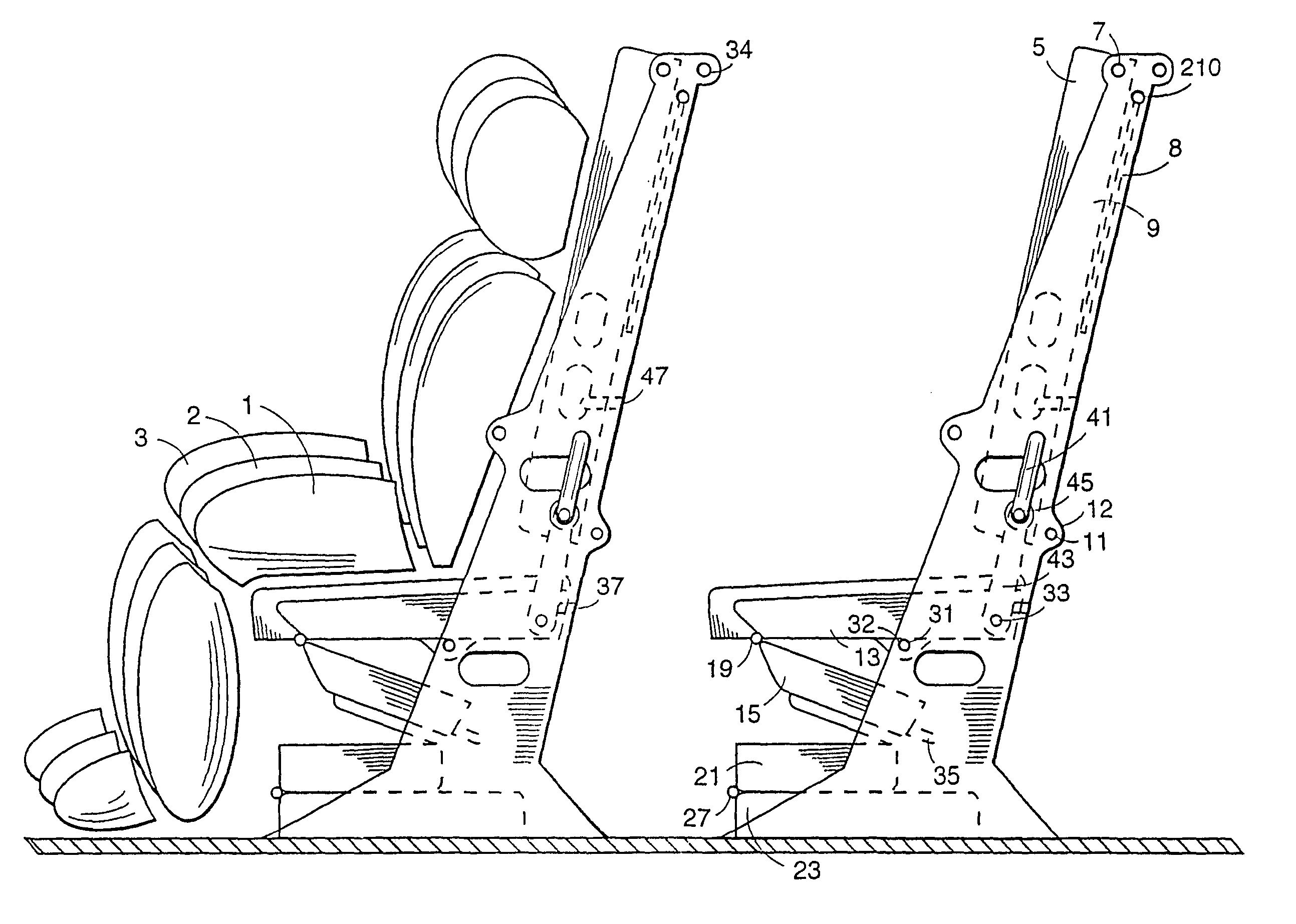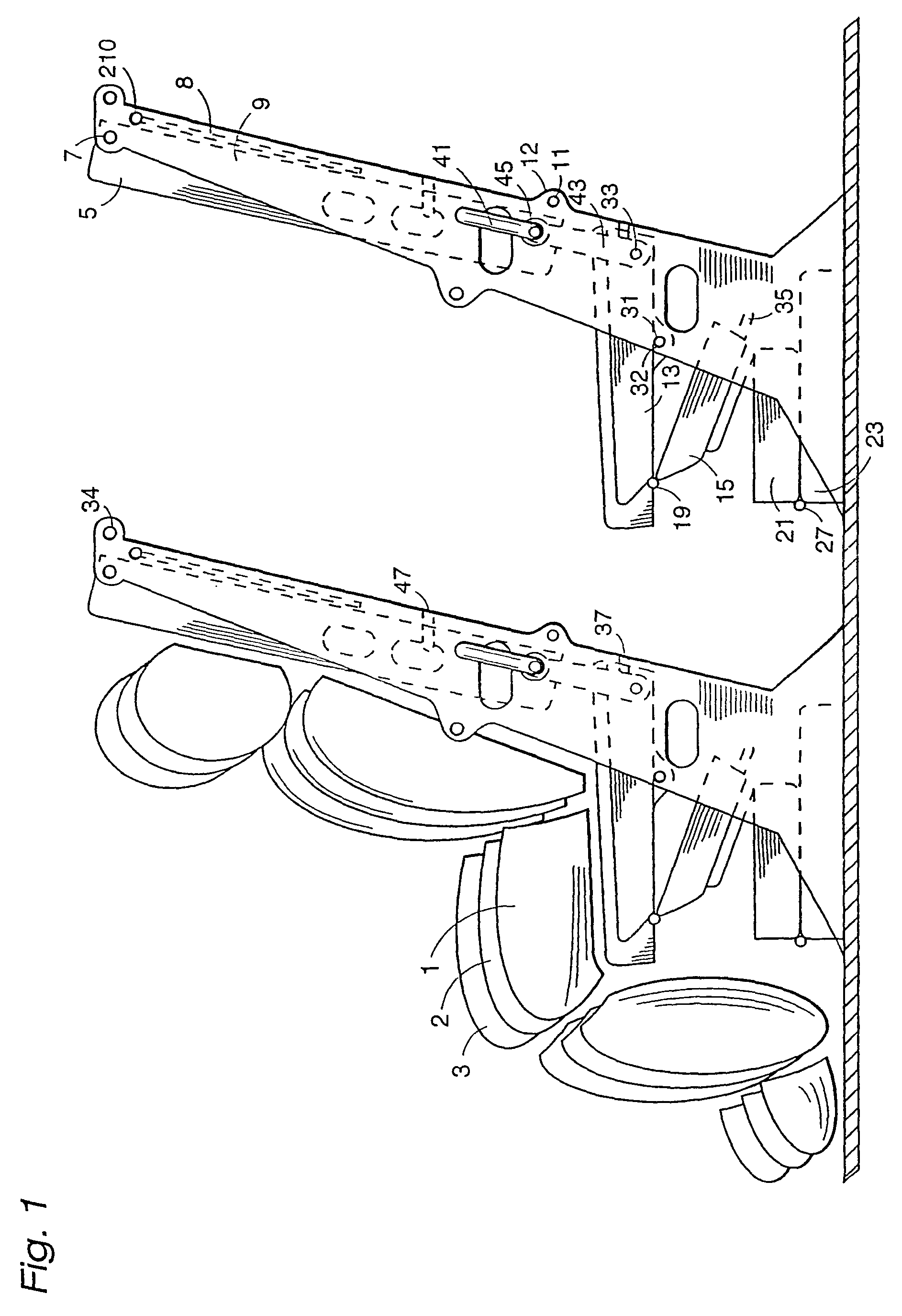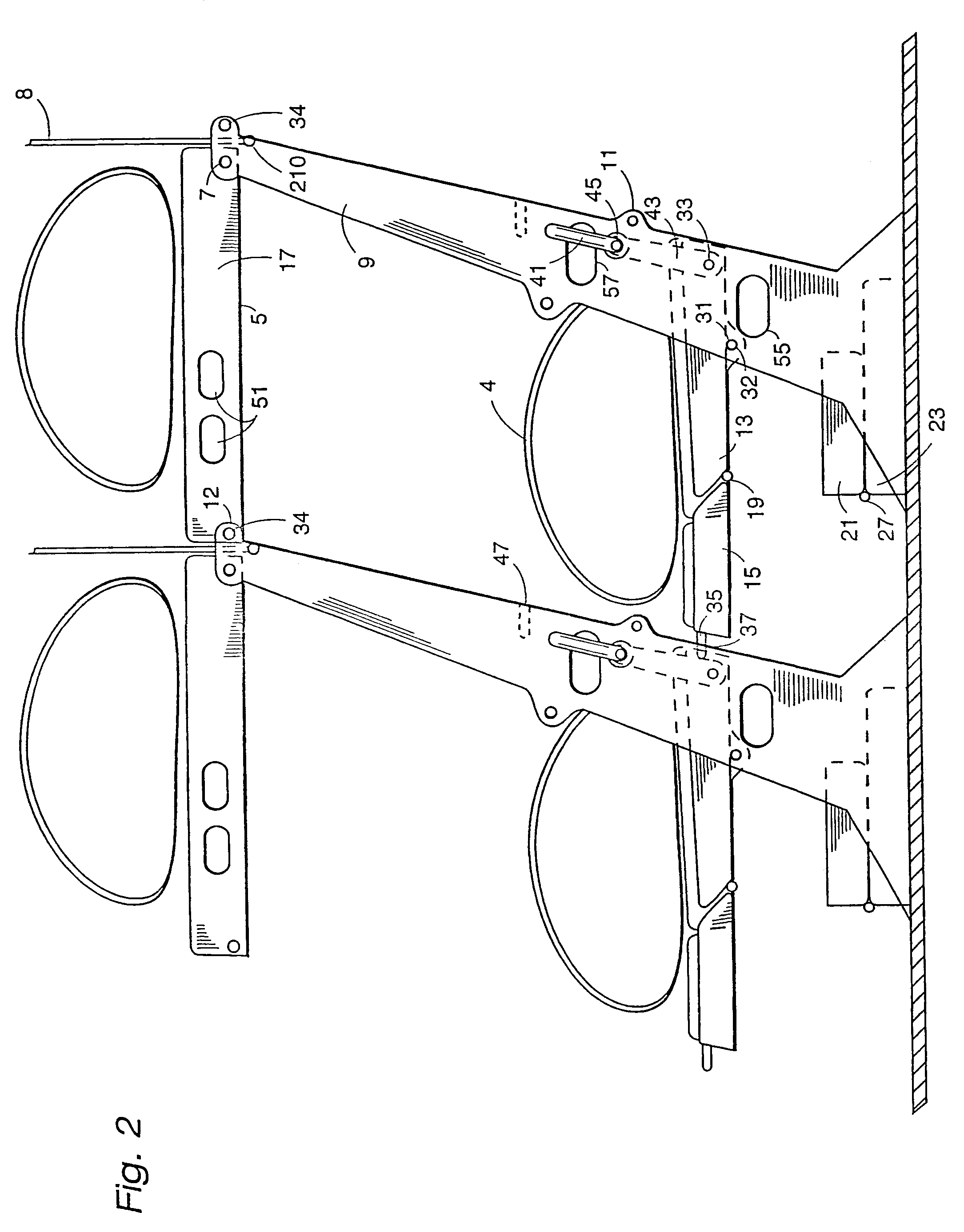Seats that convert to sleeper bunks
a technology of seat and sleeper, which is applied in the direction of seat arrangement, aircraft crew accommodation, etc., can solve the problems of not meeting the passenger density requirements of economy class, not providing anywhere near the passenger density required for economy class, and not enough time for people to climb down stairs or ladders, so as to achieve greater headroom and reduce seat load
- Summary
- Abstract
- Description
- Claims
- Application Information
AI Technical Summary
Benefits of technology
Problems solved by technology
Method used
Image
Examples
Embodiment Construction
[0033]Referring now to FIG. 1, there is shown the presently preferred embodiment of the invention from a side view. For takeoff and landing all the airline passengers would be seated in a conventional open cabin arrangement such as shown by passengers 1, 2 and 3 in FIG. 1. The passengers who are seated in fore and aft oriented rows, separated by one or more aisles, of preferably three abreast side-by-side seating as can be found on current airliners. During meal service or while reading or working the passengers could remain in a seated position as shown by passengers 1, 2 and 3. To reduce the cost and weight certain items can be eliminated such as arm rests. The weight and complexity can also be reduced by eliminating individual adjustable seat backs. The seat pad 13 and seat back 5 are couch style made in one piece to provide the seating for the three adjacent passengers. The top of seat back 5 is attached at hinge 7 to seat support structure 9, and the bottom of seat back 5 is se...
PUM
 Login to View More
Login to View More Abstract
Description
Claims
Application Information
 Login to View More
Login to View More - R&D
- Intellectual Property
- Life Sciences
- Materials
- Tech Scout
- Unparalleled Data Quality
- Higher Quality Content
- 60% Fewer Hallucinations
Browse by: Latest US Patents, China's latest patents, Technical Efficacy Thesaurus, Application Domain, Technology Topic, Popular Technical Reports.
© 2025 PatSnap. All rights reserved.Legal|Privacy policy|Modern Slavery Act Transparency Statement|Sitemap|About US| Contact US: help@patsnap.com



